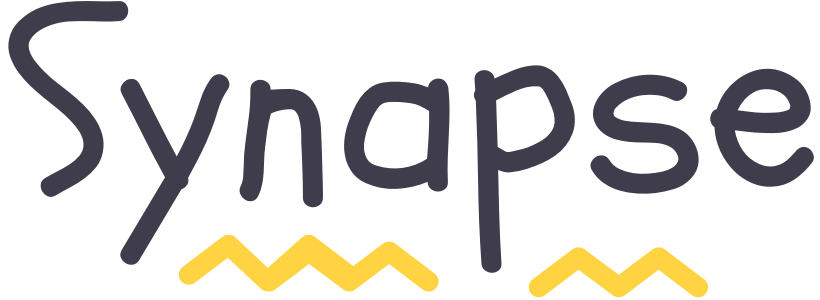Managers at e-commerce companies must adapt their leadership to get the best out of engineers, marketers and designers. How can you be an empathetic leader towards creative professionals and designers on your team to help them impact business with their creativity?
Leadership roles at e-commerce companies are demanding.
The fast pace of work, ever changing customer expectations, and the diverse background of talent. Managers must adapt their leadership style to get the best out of everyone – engineers, marketers and designers.
Independent research notes that creative professionals have unique personality traits. They value their autonomy, enjoy aesthetic impressions or are aesthetically reactive, they think and associate ideas in unusual ways, and they often have unconventional thought processes.
How can you be an empathetic leader towards creative professionals and designers on your team? How can you create the right conditions for them to impact business with their creativity?
Empower them to influence new ideas
People with creative talent value their independence and autonomy. Use this ideology to help them create impact for your brand.
Leaders must involve creative members in interesting projects but also give them the space and freedom to create new ideas and stunning concepts.
How do you strike the right balance?
Invite them to participate in the idea-phase of new projects. Don’t wait to involve them only when it’s time to implement.
Creative thinkers complement the thinking of business and tech talent. They exhibit immense curiosity and question generally accepted principles bringing a different perspective to brainstorming to inspire discovery of innovative solutions.
By inviting designers to join the ‘thinking phase’ of a project you will let them influence origin of ideas, rather than just follow the steps defined by others.
You can also expect better outcomes while making them feel included and appreciated – a trait of highly motivated teams.
Unbound their creative space. To help your team progress on a design project allow for reasonable time to turn concepts around.
Creative ideas may seem straightforward on the surface but can take a long time to execute. A typical design process has multiple cycles of experimentation and rework before reaching the final concept.
You cannot expect your creative talent to skip the important steps in the middle of this process or take shortcuts. Give them enough time to play around with ideas, experiment and iterate.
Help your creative talent produce better outcomes while also giving them their creative autonomy.
Allow broad ideas for creativity but don’t restrict them with very rigid specifics. Feel free to use examples to show the different ways a design problem can be solved but allow the designer to come up with a clearer solution.
This approach reinforces the independence of the creative process and lets your design team know that their contributions are valued.
Streamline their work space
A clear, streamlined work space is important for any kind of work. And for creative work it’s a necessity.
Clutter and distractions created hurdles for creative minds to focus.
How can you help creative team zone-in on new concepts and find the most delightful solutions?
Get rid of distractions so they can focus on a single task for enough time. Distractions in a fast-paced environment can sometime help induce new ideas, but they can also interrupt important focus time needed to take an idea to execution.
Whether it is colleagues asking for immediate fixes to current creatives, or people walking up to their desks for spontaneous discussions, or even meetings that fill up a good chunk of time of the day.
To help your creative talent achieve a flow state you must train your wider team to remove such distractions from work spaces.
Flow state, or being the zone, is critical for any style of creative work. It is a state of the mind which allows a person to fully immerse in a feeling of energized focus, full involvement, and enjoyment in the process of doing an activity.
Teams can manage distractions better by using structured time slots for flow-state, team discussions and 1-1 meetings. This will maintain a balance between brainstorming and execution.
Use tools and workflows to automate mundane tasks that keep designers bogged down. With growing transaction volumes in e-commerce, designers end up repeating a significant volume of visual work.
Replicating banners, creating slightly different variations of the same video, generating files with different dimensions from a creative, keeping the asset library organizing, tracking file versions and more.
All these tasks add up to consume up to 40% of a designer’s daily time. They also end up breaking the flow state that creative professionals need to execute on ideas.
Grunt work also drains a creative person’s energy and makes it less likely for them to generate original concepts in the future. You want your best creative minds to focus on new ideas, not be bogged down by operational tasks.
Use automation tools to setup workflows that can take care of these tasks that add unnecessary overhead for designers. Your creative team can use the time savings to focus on what they do best – on creating original ideas and stunning new concepts.
You can also help them manage their work better by using task management tools like Asana and Trello that cut the overwhelm and let them focus on one task at a time.
For design wire-framing and creative brainstorming you can recommend tools like Figma and Miro. And for team collaboration, you can rely on version control systems like Abstract or Kubric.
Kubric goes a step further to combine all these design-uses into a single toolbox that offers automation, collaboration, version control, file management and other features.
Your team can access everything from a single work space in Kubric while staying focused on original creative work.
Recognize the impact of creative talent
According to research, what motivates people more than money and positions is the ability to create impact, to be recognized for their contributions and to keep learning.
As a leader, you can keep your creative teams engaged by foregoing the typical appraisal cycles and recognizing their impact all year round.
Recognize their contribution in creating a positive impact on business. Visual mediums play an important role in attracting, influencing and converting shoppers. Their impact in numbers can be hard to attribute though.
Go out of your way to recognize the hard work your creative people put in for growth.
You can also use controlled experiments to showcase how well-design creatives impact the transactions on your store – this will help your creative talent see the direct impact of their work.
Enable learning directly from customers. In e-commerce and technology companies, creative teams often take feedback from internal teams – product, marketing and merchandising.
This is helpful but is rarely provides them the complete picture.
You should empower creative teams to interface directly with customer responses and feedback. This helps creative professionals to interpret the true nature of the customer’s emotional response.
Over time, this leads to creatives that are better aligned to customer expectations. As a bonus, this is also a great way to make the designers feel more engaged and motivated to solve customer problems.
Final note
Remember, everyone needs different things to be truly creative.
Talk to individual members in your team and ask them to experiment with different systems, tools and workflows. Help them discover the right steps to build a creative, and productive work space that suits them.
By being empathetic towards creative professionals and designers on your team, you can create the right conditions for them to help business grow.

 Go to App
Go to App Subscribe
Subscribe

